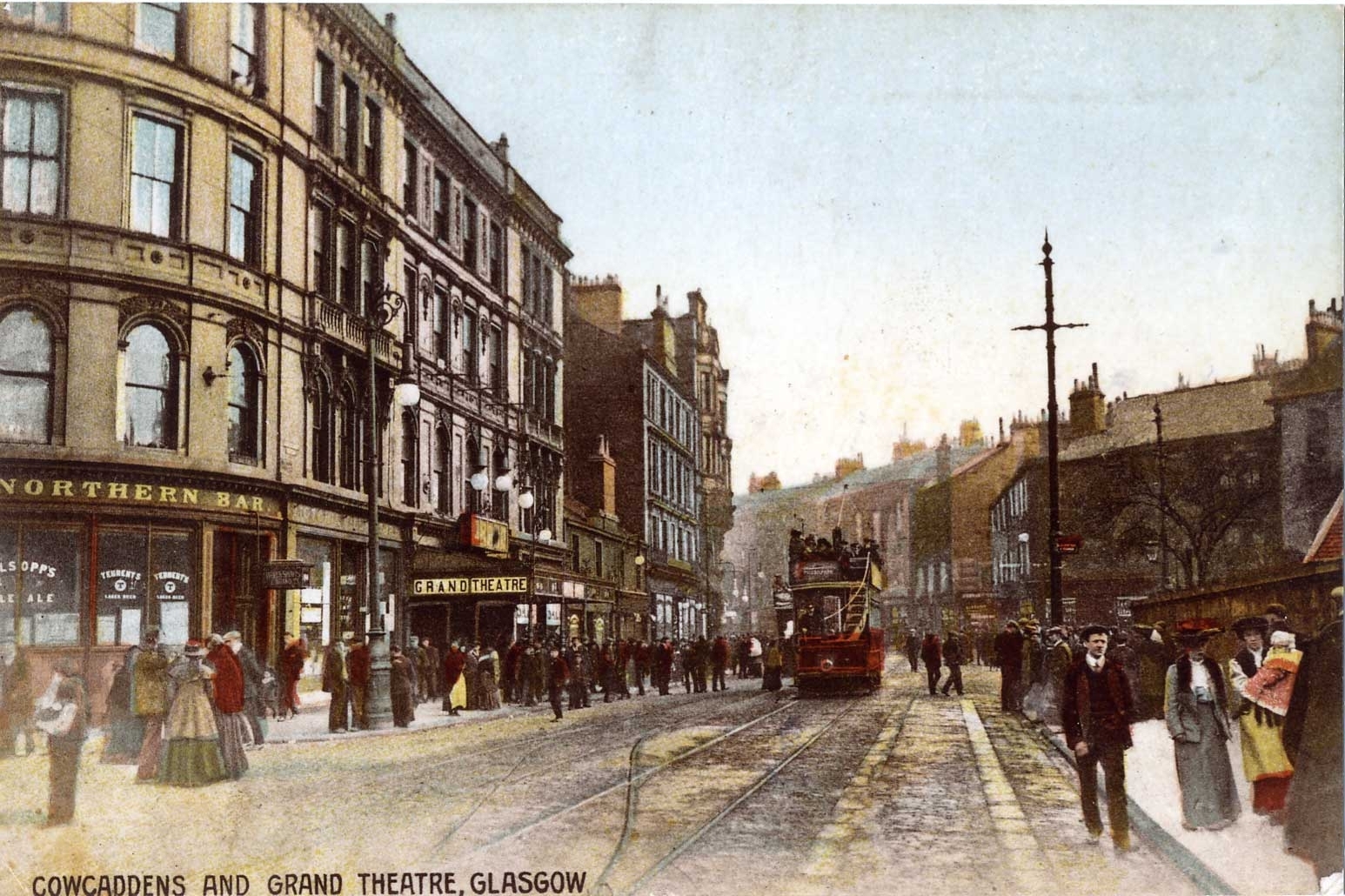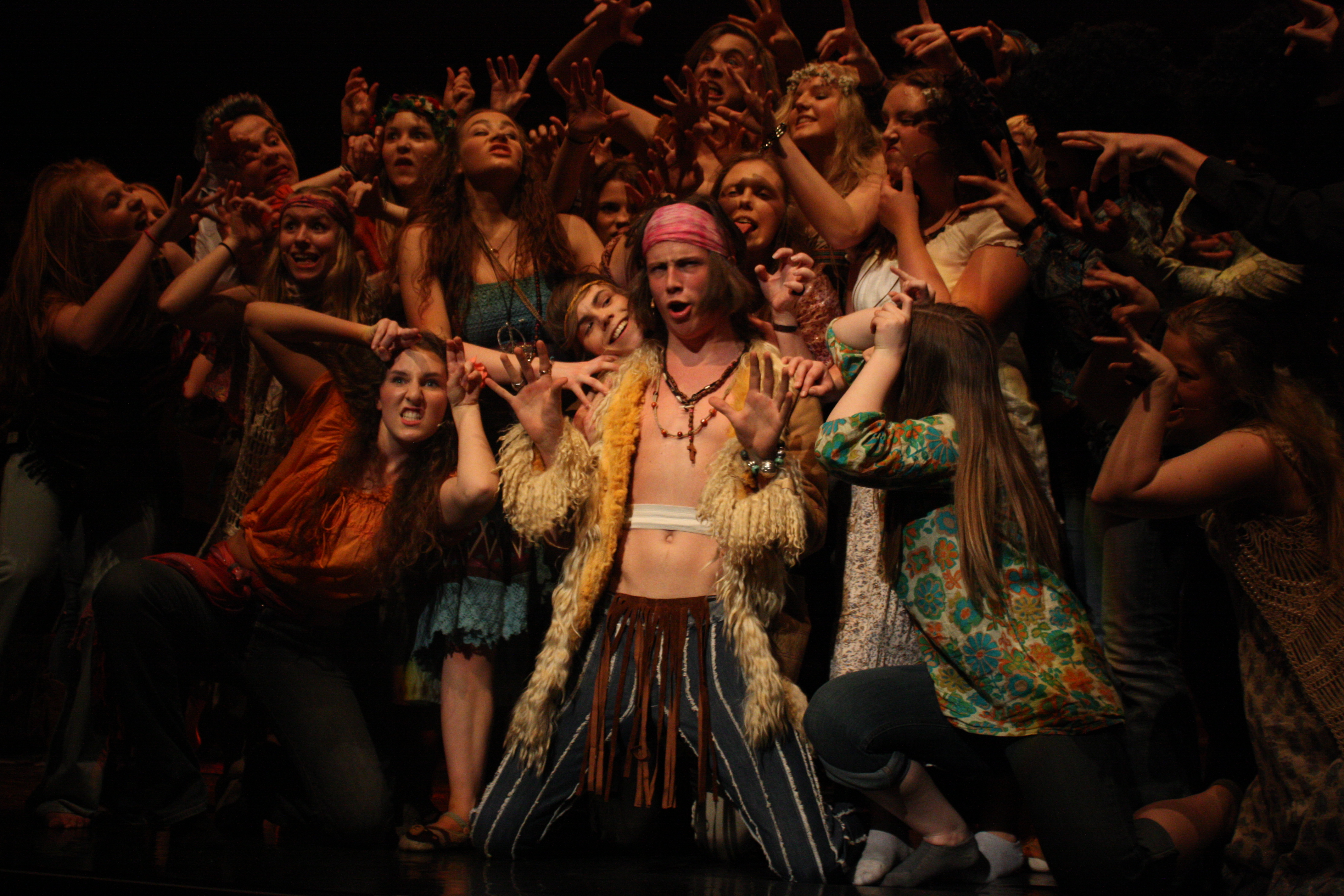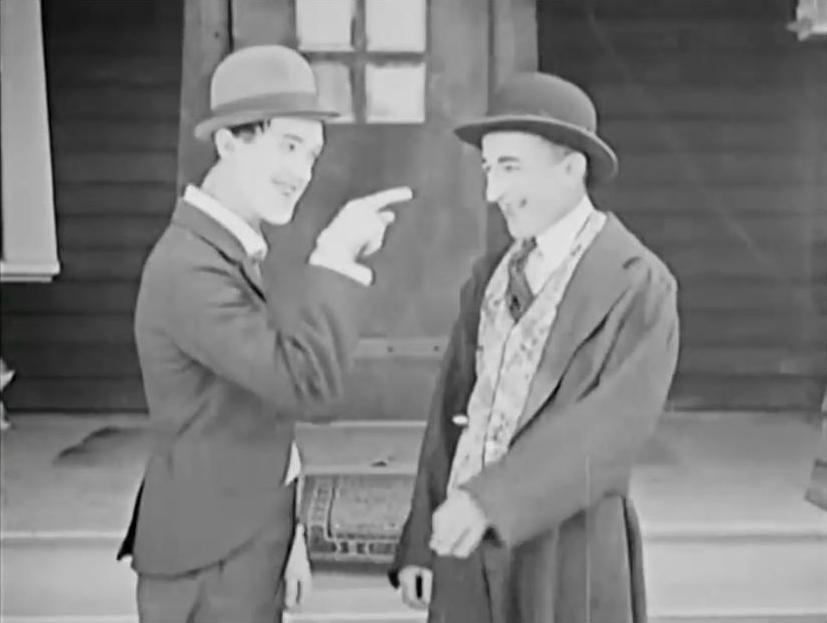|
Metropole Theatre
The Metropole Theatre started as the Scotia and was built in 1862 at 116, Stockwell Street, Glasgow, Scotland. Built to the designs of architect Robert Black for James Baylis, who later built the Theatre Royal in the Cowcaddens area of the city, it opened as the Scotia Hall, holding over 3000 people, with stalls and two galleries, reputed to be the first purpose built commercial music-hall in Scotland. Due to fire in 1875 it was rebuilt to the designs of architects Campbell Douglas and James Sellars and renamed The Scotia Variety Theatre, claiming to be the largest and best variety company in Scotland. The Baylis family headed by Christina Baylis continued to run it until 1892, selling it on her retiral to Moss Empires who ran it until 1897 when they opened their new Empire Palace in Sauchiehall Street. At this point Edward Moss leased the theatre to HH Morrell and F Mouillot who named it The Metropole and presented plays, usually melodramas. Successive lessees included Arthur ... [...More Info...] [...Related Items...] OR: [Wikipedia] [Google] [Baidu] |
Glasgow
Glasgow is the Cities of Scotland, most populous city in Scotland, located on the banks of the River Clyde in Strathclyde, west central Scotland. It is the List of cities in the United Kingdom, third-most-populous city in the United Kingdom and the 27th-most-populous city in Europe, and comprises Wards of Glasgow, 23 wards which represent the areas of the city within Glasgow City Council. Glasgow is a leading city in Scotland for finance, shopping, industry, culture and fashion, and was commonly referred to as the "second city of the British Empire" for much of the Victorian era, Victorian and Edwardian eras. In , it had an estimated population as a defined locality of . More than 1,000,000 people live in the Greater Glasgow contiguous urban area, while the wider Glasgow City Region is home to more than 1,800,000 people (its defined functional urban area total was almost the same in 2020), around a third of Scotland's population. The city has a population density of 3,562 p ... [...More Info...] [...Related Items...] OR: [Wikipedia] [Google] [Baidu] |
Scotland
Scotland is a Countries of the United Kingdom, country that is part of the United Kingdom. It contains nearly one-third of the United Kingdom's land area, consisting of the northern part of the island of Great Britain and more than 790 adjacent Islands of Scotland, islands, principally in the archipelagos of the Hebrides and the Northern Isles. To the south-east, Scotland has its Anglo-Scottish border, only land border, which is long and shared with England; the country is surrounded by the Atlantic Ocean to the north and west, the North Sea to the north-east and east, and the Irish Sea to the south. The population in 2022 was 5,439,842. Edinburgh is the capital and Glasgow is the most populous of the cities of Scotland. The Kingdom of Scotland emerged as an independent sovereign state in the 9th century. In 1603, James VI succeeded to the thrones of Kingdom of England, England and Kingdom of Ireland, Ireland, forming a personal union of the Union of the Crowns, three kingdo ... [...More Info...] [...Related Items...] OR: [Wikipedia] [Google] [Baidu] |
James Baylis
James Baylis was a theatre entrepreneur and entertainment provider in 19th century Glasgow, where he originated music halls and theatres from the 1840s until his death in 1870. One of his major developments was the Theatre Royal, Glasgow which continues today and is owned by Scottish Opera. Baylis was born in Ireland, the son of a bandmaster in the army, and settled in Glasgow with his wife Christina Ferguson Baylis. He worked as a book keeper in a brewery and in evenings and weekends in the late 1840s was the manager of Sloan's Oddfellows Singing Saloon, Saltmarket, Glasgow Cross, owned by his brother-in-law (husband of his sister, Mary McBirnie Baylis). He was helped in his variety developments by his brother Sam Baylis who became the noted owner of the Baylis Marionnette Company, most active in England and Ireland.''The Theatre Royal: Entertaining a Nation'', by Graeme Smith, published 2008 James Baylis determined to have his own music halls and theatres. The first was the Mil ... [...More Info...] [...Related Items...] OR: [Wikipedia] [Google] [Baidu] |
Theatre Royal, Glasgow
The Theatre Royal is the oldest theatre in Glasgow and the longest running in Scotland. Located at 282 Hope Street, its front door was originally round the corner in Cowcaddens Street. It currently accommodates 1,541 people and is owned by Scottish Opera. The theatre opened in 1867, adopting the name Theatre Royal two years later. It is also the birthplace of Howard & Wyndham Ltd, owners and managers of theatres in Scotland and England until the 1970s, created by its chairman Baillie Michael Simons in 1895. It was Simons who as a cultural entrepreneur of his day also promoted the building of Kelvingrove Art Gallery and Museum and Glasgow's International Exhibitions of 1888 (the International Exhibition of Science, Art and Industry) and 1901. History The theatre was opened in 1867 as the Royal Colosseum and Opera House by James Baylis. Baylis also ran the Milton Colosseum Music Hall at Cowcaddens Cross, and had opened the Scotia Music Hall, later known as the Metropole, in S ... [...More Info...] [...Related Items...] OR: [Wikipedia] [Google] [Baidu] |
Cowcaddens
Cowcaddens (; , ) is an area of the city of , Scotland. It sits directly north of the and is bordered by the newer area of Garnethill to the south-west and to the east. Cowcaddens was originally a village and became an industrious and thriving part of the expanding Glasgow, being close to [...More Info...] [...Related Items...] OR: [Wikipedia] [Google] [Baidu] |
Moss Empires
Moss Empires was a company formed in Edinburgh in 1899, from the merger of the theatre companies owned by Sir Edward Moss, Richard Thornton and Sir Oswald Stoll. This created the largest chain of variety theatres and music halls in the United Kingdom. The business was successful, with major variety theatres in almost every city in the UK and Ireland, and was advertised as the largest group in the world. History The group had grown to over 50 theatres when Stoll withdrew his in 1910 to run them as a separate business. The first Royal Command Variety Performance was planned for Sir Edward Moss's Edinburgh Empire in the Coronation year 1911 but it burned down and instead was held at the London Palace Theatre in 1912, owned then by Sir Alfred Butt, a competitor of Moss, who later joined its alliance; with many subsequent performances being given at the London Palladium. In 1932, impresario and producer George Black oversaw the merging of GTC (General Theatre Corporation) w ... [...More Info...] [...Related Items...] OR: [Wikipedia] [Google] [Baidu] |
Edward Moss (impresario)
Sir Horace Edward Moss (12 April 1852 – 25 November 1912) was a British theatre impresario and the founder chairman and joint managing director of the Moss Empires Ltd theatre combine which he created in 1899, and floated on the Stock Exchange, after first joining forces with Richard Thornton of Newcastle and later with Oswald Stoll then operating in Wales. From its start and during the 20th century, Moss Empires remained the largest group of variety theatres in Britain, with over 50 venues at its height, and was regarded as the largest in the world. It was he who, in 1904, introduced a "four shows a day" system at some of his theatres; he was also the first to allow advance booking of seats in a music hall. Career and management H. E. Moss, known as Ted to family and friends, was born in Droylsden, Lancashire, the son of James and Martha Moss. His father James Moss was a fiddler and character singer in singing saloons. He was educated in Edinburgh and Glasgow, where he recei ... [...More Info...] [...Related Items...] OR: [Wikipedia] [Google] [Baidu] |
Empress Theatre (Glasgow)
The Metropole Theatre started as the Scotia and was built in 1862 at 116, Stockwell Street, Glasgow, Scotland. Built to the designs of architect Robert Black for James Baylis, who later built the Theatre Royal in the Cowcaddens area of the city, it opened as the Scotia Hall, holding over 3000 people, with stalls and two galleries, reputed to be the first purpose built commercial music-hall in Scotland. Due to fire in 1875 it was rebuilt to the designs of architects Campbell Douglas and James Sellars and renamed The Scotia Variety Theatre, claiming to be the largest and best variety company in Scotland. The Baylis family headed by Christina Baylis continued to run it until 1892, selling it on her retiral to Moss Empires who ran it until 1897 when they opened their new Empire Palace in Sauchiehall Street. At this point Edward Moss leased the theatre to HH Morrell and F Mouillot who named it The Metropole and presented plays, usually melodramas. Successive lessees included Arthur ... [...More Info...] [...Related Items...] OR: [Wikipedia] [Google] [Baidu] |
Jimmy Logan
James Allan Short, Officer of the Order of the British Empire, OBE, RSAMD, FRSAMD (4 April 1928 – 13 April 2001), known professionally as Jimmy Logan, was a Scotland, Scottish performer, theatrical producer, impresario and Theatre director, director. Family Logan was born in Dennistoun, Glasgow, a member of a family of entertainers; the tradition began with his parents (Jack Short and Mary Dalziel "May" Allan) who were the music hall act Short and Dalziel. His aunt, from whom he took his stage surname, was Broadway theatre, Broadway performer Ella Logan. He had four siblings including actress/singer Annie Ross. Career Educated at Gourock High School, Inverclyde, and latterly Bellahouston Academy, Glasgow, Logan left school at the age of 14. His family, in the 1930s and 1940s, toured the small music halls of Scotland and Northern Ireland and ran seasons at the Metropole, Glasgow and in the Theatre, Paisley, where Logan became house manager for the family. He was in pantomime ... [...More Info...] [...Related Items...] OR: [Wikipedia] [Google] [Baidu] |
Hair (musical)
''Hair: The American Tribal Love-Rock Musical'' is a rock musical with a book and lyrics by Gerome Ragni and James Rado and music by Galt MacDermot. The work reflects the creators' observations of the hippie Counterculture of the 1960s, counterculture and sexual revolution of the late 1960s, and several of its songs became anthems of the Opposition to the Vietnam War, anti-Vietnam War movement. The musical's profanity, its depiction of the use of illegal drugs, its treatment of free love, sexuality, its irreverence for the American flag, and its nude scene caused controversy. The work broke new ground in musical theatre by defining the genre of "rock musical", using a racially integrated cast, and inviting the audience onstage for a "Human Be-In, Be-In" finale.Pacheco, Patrick (June 17, 2001)"Peace, Love and Freedom Party" ''Los Angeles Times'', p. 1. Retrieved on June 10, 2008 ''Hair'' tells the story of the "tribe", a group of politically active, long-haired hippies of the ... [...More Info...] [...Related Items...] OR: [Wikipedia] [Google] [Baidu] |
Box Office
A box office or ticket office is a place where ticket (admission), tickets are sold to the public for admission to an event. Patrons may perform the transaction at a countertop, through a hole in a wall or window, or at a Wicket gate, wicket. By extension, the term is frequently used, especially in the context of the film industry, as a metonym for the amount of business a particular production, such as a film or theatre show, receives. The term is also used to refer to a ticket office at an arena or a stadium. ''Box office'' business can be measured in terms of the number of tickets sold or the amount of money raised by ticket sales (revenue). The projection and analysis of these earnings is greatly important for the creative industries and often a source of interest for fans. This is predominant in the Hollywood movie industry. To determine if a movie made a profit, it is not correct to directly compare the box office gross with the production budget, because the movie thea ... [...More Info...] [...Related Items...] OR: [Wikipedia] [Google] [Baidu] |
Stan Laurel
Stan Laurel ( ; born Arthur Stanley Jefferson; 16 June 1890 – 23 February 1965) was an English comic actor, director and writer who was in the comedy double act, duo Laurel and Hardy. He appeared with his comedy partner Oliver Hardy in 107 short films, feature films and cameo roles. Laurel began his career in music hall, where he developed a number of his standard comic devices, including the bowler hat, the deep comic gravity and the nonsensical understatement, and developed his skills in pantomime and music-hall sketches.McCabe 2005, p. 143. Robson, 2005. Retrieved: 18 June 2012. He was a member of "Fred Karno's London Comedians", where he was Charlie Chaplin's understudy. He and Chaplin arrived in the United States on the same ship from the United Kingdom with the Karno troupe. Laurel began his film career in 1917 and made his final appearance in 1951. He appeared with his comic partner Oliver Hardy in the film short ''The Lucky Dog'' in 1921, although they did not become ... [...More Info...] [...Related Items...] OR: [Wikipedia] [Google] [Baidu] |







